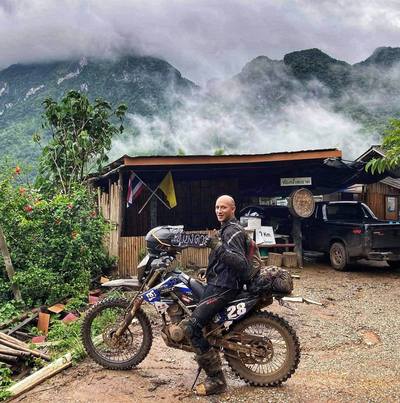Mastering motorcycle riding offers both thrilling and demanding experiences. The sense of freedom and adventure that comes with riding is unmatched, but it requires skill, patience, and practice to master. As a new rider, it’s crucial to understand the basics of how to handle a motorcycle safely before hitting the road.
If you’re a college student balancing academics with this new skill, you’re not alone. While learning to ride a motorcycle may seem daunting, services like domyessay.com, which write my essay for me, can help lighten your academic load. This option allows you to focus on mastering your riding skills while ensuring your schoolwork stays on track.
Understanding the Basics of Motorcycle Riding
To venture confidently onto the open road, you must first grasp the basics of motorcycle riding for beginners. Riding a motorcycle isn’t the same as driving a car. There are unique skills involved, such as balancing, throttle control, and gear shifting. Let’s break down the essential steps for getting started.
Gear Up Properly
One of the first things you should do when learning how to ride a motorcycle is to invest in proper riding gear. Prioritizing safety is crucial, and wearing the right gear can significantly protect you in the event of an accident. Essential items include:
-
A DOT-approved helmet

- Gloves
- A riding jacket with armor
- Motorcycle boots
- Durable pants
These items help protect you in case of a fall, and they make riding more comfortable by providing necessary grip and stability. Never skimp on safety gear. It’s a crucial part of being a responsible rider.
Learn the Controls
Familiarizing yourself with a motorcycle’s fundamental controls is essential to learning how to drive a motorcycle. Motorcycles generally have controls like the throttle, brake levers, clutch, and gear shifter. Each plays an essential role in how the bike operates, so take your time familiarizing yourself with these parts.
- Throttle: Controls the motorcycle’s speed.
- Clutch: Facilitates smooth gear transitions.
- Front and Rear Brakes: Vital for stopping the bike safely.
- Gear Shifter: Helps you change gears based on your speed.
Before you even begin riding a motorcycle, practice using these controls while the bike is stationary. When you’re comfortable with the controls, begin your practice on a quiet road or in a parking lot.
Starting Your Ride: The First Steps
Mounting the Motorcycle
The first thing you need to know about how to learn to ride a motorcycle is how to mount the bike safely. Approach the motorcycle from the left side (most bikes are designed for this), grip the handlebars, and swing your right leg over. Make sure the kickstand is up, and you’re balanced on both feet before starting the engine.
Mastering Balance and Throttle Control

When you’re just starting, learning to ride a motorcycle can feel awkward due to the balancing act required. A key skill is throttle control—how much you twist the throttle to accelerate or decelerate. Start with light twists, and make sure you’re comfortable with the bike’s response before attempting higher speeds.
Start with balance and throttle control in a secluded parking lot or on a calm street. Stay off busier roads until your control skills improve.
Braking Smoothly
Knowing how to brake properly is essential for safe riding. Both the front and rear brakes are important, but many new riders make the mistake of relying too heavily on the rear brake. To stop safely, apply gradual pressure to both brakes while maintaining your balance.
Always practice braking in a straight line until you’re confident in your ability to stop the bike smoothly in different conditions, such as downhill, uphill, or on wet roads.
Practicing on Different Terrains
Gradually Increase Speed and Distance
Once you have the basics down, gradually increase both your speed and the distance of your rides. Begin with short journeys in areas with little traffic, building your confidence gradually. Riding motorcycle at faster speeds requires more focus and balance, so make sure you’re comfortable at lower speeds first.
Tackling Curves and Corners
One of the most challenging parts of learning how to ride a motorcycle for beginners is mastering corners and curves. To navigate curves smoothly, reduce your speed before the curve, lean into the curve, and gently accelerate as you come out of it.
Practice on wider curves before attempting tighter ones, and always make sure to look where you want to go, not at the obstacles or edge of the road.
Riding on Different Road Conditions
Once you’ve mastered riding a motorcycle on smooth, flat roads, it’s time to practice on other types of terrain. Gravel, rain-soaked roads, and uneven surfaces can all pose challenges. Begin at a slow pace and maintain a light grip on the handlebars for optimal control. Never panic or make sudden movements in rough conditions.
Conclusion
Riding a motorcycle can be both exhilarating and gratifying when approached with the right techniques and safety measures. From understanding the basic controls to practicing on different terrains, mastering these skills takes time and patience. Start with the basics, focus on safety, and practice often to build confidence.
The journey of becoming a skilled rider is a process, but with persistence and dedication, you’ll soon be cruising with confidence. Stay safe, stay aware, and enjoy the freedom that comes with riding!
ABOUT THE AUTHOR
Nicole Hardy
Senior Content Creator
Nicole Hardy is a renowned content writer, recognized for her in-depth and insightful journalism, particularly in the fields of education and the arts, with a strong focus on performing arts education. With over ten years of experience, Hardy has built a reputation as a leading voice in her field, known for her comprehensive analysis and engaging storytelling. She holds a Master's degree in Journalism from the University of Arts, specializing in arts and culture journalism.





